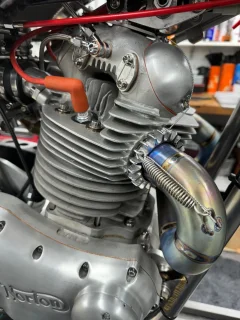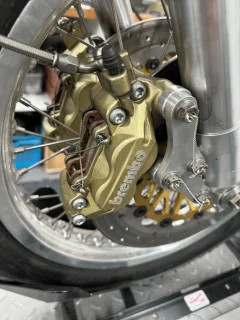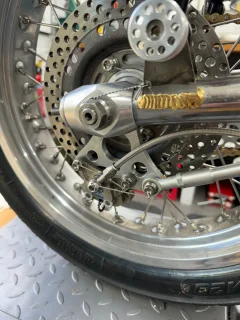- Joined
- Feb 26, 2022
- Messages
- 92
Hi all,
Onto the next thing in my MKIII rebuild, securing the tappet screws. There is info and diagrams on the web for how its done for aviation, orienting the wire to pull each screw tight against the other etc. But the available space around these screws is so small that I am really struggling to keep everything tight as I twist the wire! I'm using the same gauge wire that came out of the bike, which is .038" stainless steel. And the orientation of the fully seated screws is a little funky, requiring twists to happen between the screw and the barrel casting, which is maybe 1" of space. Does anyone have a successful strategy for keeping things tight in the space available? The original wire was tight so I know it can be done somehow.
Alternatively, if I put a little blue thread lock on the screws and get the wire in albeit imperfectly tight, would that be sufficient? How would you guys do it on your bikes? I have plenty of wire to keep trying but my results have all been pretty similar...
Thanks,
Anthony
Onto the next thing in my MKIII rebuild, securing the tappet screws. There is info and diagrams on the web for how its done for aviation, orienting the wire to pull each screw tight against the other etc. But the available space around these screws is so small that I am really struggling to keep everything tight as I twist the wire! I'm using the same gauge wire that came out of the bike, which is .038" stainless steel. And the orientation of the fully seated screws is a little funky, requiring twists to happen between the screw and the barrel casting, which is maybe 1" of space. Does anyone have a successful strategy for keeping things tight in the space available? The original wire was tight so I know it can be done somehow.
Alternatively, if I put a little blue thread lock on the screws and get the wire in albeit imperfectly tight, would that be sufficient? How would you guys do it on your bikes? I have plenty of wire to keep trying but my results have all been pretty similar...
Thanks,
Anthony



